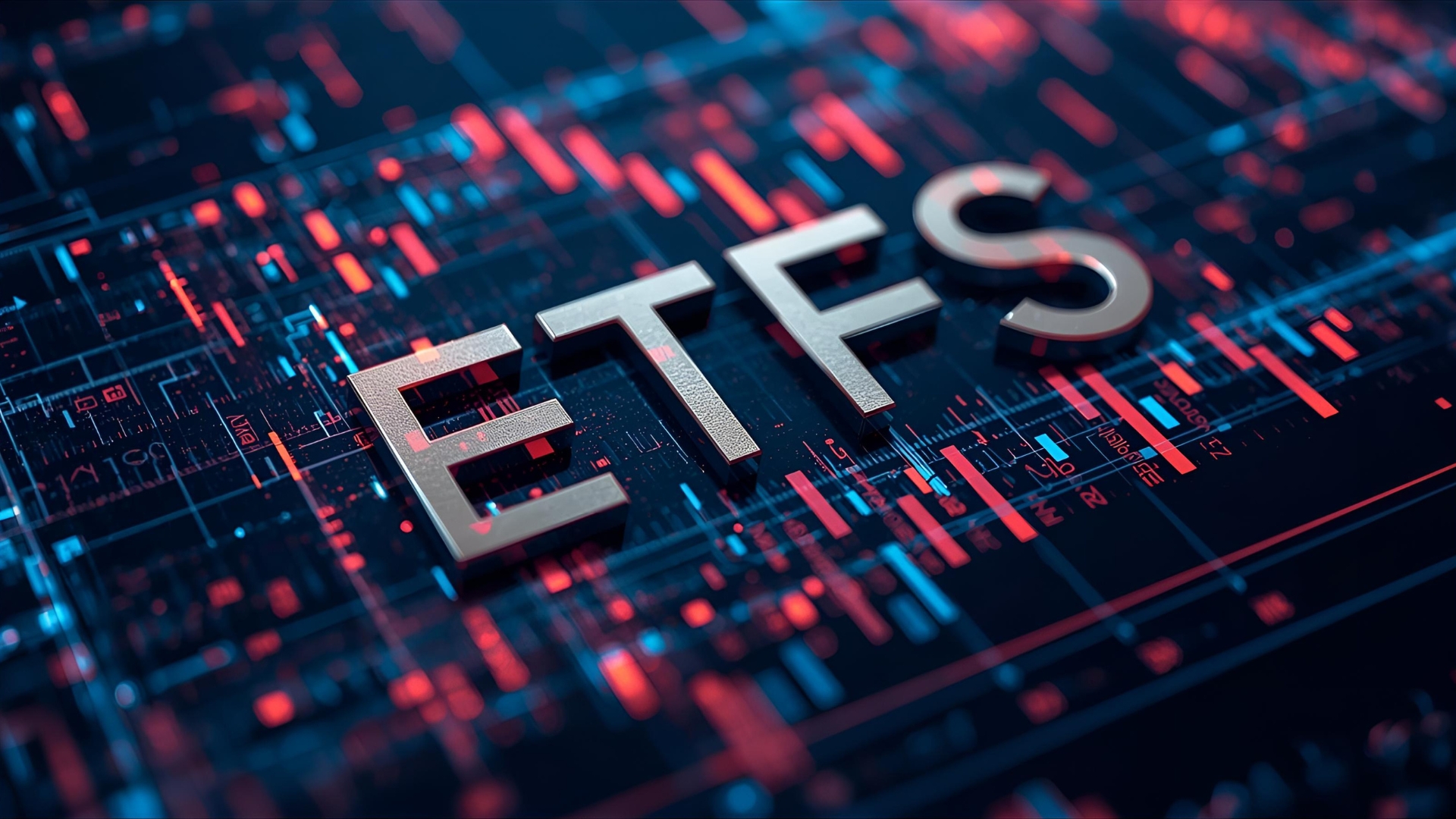The long-anticipated altcoin ETF season—the moment when U.S. markets move beyond Bitcoin and Ether products into funds tied to networks like Solana, XRP, and other large-cap altcoins—is colliding with a harsh reality: a federal funding lapse that shutters much of Washington. When the federal government shuts down, the Securities and Exchange Commission (SEC) is forced to furlough most of its staff, operating with only a skeleton crew focused on emergencies. That doesn’t just slow down finance; it can freeze critical timelines for ETF approvals, corporate filings, and routine market oversight. As of October 2, 2025, the shutdown is active, and regulators are curtailing normal functions. For markets that run on confidence, clarity, and calendars, this matters.
In practical terms, the shutdown means the SEC’s Division of Trading and Markets and Division of Corporation Finance—the groups that shepherd exchange rule changes and ETF registration statements—are largely unavailable, except for essential market-protection tasks. Reuters reports the SEC is furloughing over 90% of its workforce during the current shutdown, a severe constraint that directly threatens the pace and predictability of altcoin ETF reviews.
To understand the stakes, recall how the U.S. crypto ETF market matured in stages. Bitcoin funds opened the door, and in July 2024 the SEC approved several spot Ether ETFs, expanding mainstream access to crypto beyond BTC. That milestone set expectations for the next wave: Solana ETF proposals and other altcoin ETFs queuing for decisions throughout 2025. A shutdown introduces friction right where the market craves momentum.
Shutdown mechanics why market calendars slip when Washington stops
A federal shutdown occurs when Congress fails to pass funding, triggering a “lapse in appropriations.” Under the Antideficiency Act, agencies must halt non-essential work. The SEC’s own Operations Plan Under a Lapse in Appropriations makes it plain: during a shutdown, routine reviews, comment letters, and most rulemaking stop. The agency keeps a small team for emergency enforcement and market monitoring, but activities like processing new ETF applications and S-1 or 19b-4 filings are largely paused. In short, the pipeline clogs.
This is not theoretical. In the present shutdown, financial regulators have begun shuttering, with the SEC moving to bare-bones staffing. That means fewer hands to read prospectuses, fewer attorneys to assess market structure questions, and fewer economists to test surveillance agreements and market manipulation concerns—precisely the work that underpins altcoin ETF decisions.
The timing trap pending altcoin ETF deadlines meet a frozen SEC
Heading into the fall, the Solana ETF queue was already time-sensitive. In mid-August, the SEC extended review periods for two Solana spot ETF proposals, kicking decisions to October 16, 2025—a date now uncomfortably close to the shutdown window. While statutory clocks can sometimes be tolled or extended via new notices, the practical reality is that a furloughed staff cannot run complex reviews on time. Even if the agency later reopens, the backlog means sliding calendars and delayed launches.

Beyond Solana, the 2025 crypto ETF watchlist has included filings from familiar players across a range of altcoins, though rumors occasionally outpace official dockets. Analysts track the evolving landscape to gauge when the “season” truly broadens. A shutdown muddies those expectations by removing administrative capacity precisely when sponsors are refining market surveillance proposals and answering the SEC’s technical questions. Put another way: the clock keeps ticking for issuers and exchanges, but the referee just left the field.
Ether as precedent—and why altcoins still need fresh green lights
The Ether ETF approvals in July 2024 created a roadmap for non-Bitcoin exposure, but they didn’t automatically clear the path for other layer-1 or smart-contract platform tokens. Each altcoin ETF must stand on its own record of market integrity, liquidity, custody readiness, valuation clarity, and resistance to manipulation. That takes time, staff, and iterative dialogue.
Shutdowns break that dialogue chain. Even where “copy-and-paste” elements exist—custody templates, surveillance agreements, AP create-redeem mechanics—differences in trading venues and on-chain activity can require bespoke analysis. With more than 90% of staff furloughed, bespoke work rarely gets done.
Market impact volatility loves a vacuum
Markets dislike uncertainty more than they dislike bad news. The prospect of delayed altcoin ETF approvals produces three distinct effects:
1) Liquidity deferral in spot markets
ETF launches are powerful liquidity magnets, pulling in registered investment advisers, wealth platforms, and portfolio strategists who cannot—or will not—hold raw tokens. When a shutdown delays approvals, that new cohort stays on the sidelines, throttling expected inflows into targeted altcoins. In the near term, that can suppress volumes and widen spreads, especially for assets whose ETF narrative has been bid into prices. Reuters already flagged broader volatility risk as financial regulators furlough staff and routine functions stall.
2) Hedging demand and basis noise in derivatives
Before ETF launches, market-makers often hedge anticipated inventory using futures or perpetuals. If the calendar slips, those hedges must be rolled, resized, or unwound, introducing basis dislocations and funding-rate churn. Thin liquidity deepens the problem: less two-way flow means every hedge adjustment moves the market more than usual.
3) Narrative risk and rotation
Crypto rotates on narratives. A delayed altcoin ETF season can trigger rotation back into Bitcoin and Ether, which already have mature U.S. ETP channels, while traders reassess the timing for Solana, XRP, or DeFi-linked exposures. If the shutdown stretches, that rotation can harden into positioning—pushing relative underperformance in the very coins investors expected to benefit next.
Micro to macro from ETF timelines to the broader shutdown picture
This isn’t happening in a vacuum. The shutdown has closed or curtailed several agencies, furloughing hundreds of thousands of federal workers and delaying normal legislative action. Even the judiciary is operating on limited funding buffers.
The broader backdrop is one of stop-start governance and delayed data, a recipe for elevated macro volatility. That environment complicates risk models, VaR limits, and RWA allocations across the sell-side, reinforcing caution toward new crypto exposures that rely on a functioning SEC timetable.
What the SEC can—and cannot—do during a shutdown
The SEC’s contingency plan is explicit: in a funding lapse, the Commission narrows to essential functions tied to immediate threats to investor protection or property. Core capital-formation activities—think IPO registrations and ETF launches—do not typically qualify.
While electronic systems may still accept filings, meaningful staff review and action generally pause. In practice, that means 19b-4 rule changes and S-1 registrations for altcoin ETFs sit in queue until funding returns, after which staff triage a backlog. Sponsors can respond to outstanding comments, but fresh ones may not arrive. Expect elongation, not acceleration.
The Solana case study why a two-week delay can ripple for months
With Solana proposals facing an October 16, 2025 date, a shutdown-induced pause risks pushing decisions into late Q4 or beyond, depending on Congress’s timeline. Even a brief delay can cascade: marketing windows shift, exchange readiness dates slip, and authorized participant (AP) agreements need re-papering if the operational calendar moves.
For funds targeting year-end portfolio rebalances, missing November can mean missing the year entirely. Sponsors may need to reset roadshows, amend fee tables, or update references to on-chain metrics and liquidity conditions that have gone stale. Multiply that by several issuers, and you have a season sliding sideways.
Lessons from Ether ETFs momentum matters, but staffing does too

The Ether approvals demonstrated how quickly asset managers can list once the final orders arrive. But that sprint depends on months of prior choreography with the SEC—iterations on surveillance-sharing agreements, custody audits, and disclosure language. When that choreography pauses, the post-approval sprint stalls before it starts. The market’s takeaway is simple: altcoin ETF momentum is a function not just of legal arguments and market data, but of operational capacity inside a regulator that currently has most of its people at home.
Price discovery, spreads, and the “missing” passive bid
One under-appreciated effect of delayed altcoin ETFs is the absence of the passive bid. Index allocators and model-driven multi-asset funds often wait for exchange-traded wrappers to build exposure. When those wrappers are late, on-exchange liquidity can be fragile, especially during macro shocks.
The shutdown itself contributes to such shocks by raising uncertainty about economic data releases and regulatory oversight—Reuters notes markets already wobbling on shutdown headlines, with safe-haven flows into gold. In that setting, spreads widen and price discovery grows more episodic, increasing slippage for retail and institutional traders alike.
Custody, staking, and product design questions that don’t answer themselves
Even apart from approvals, issuers are wrestling with design choices—staking policy for Ether products, how to address validator rewards, and whether certain altcoin ETFs can capture network yield without triggering securities-law concerns. In 2024 Ether ETFs launched without staking, reflecting the SEC’s caution around those mechanics.
Any evolution here would require careful dialogue and, potentially, new guidance—work that becomes far harder in a shutdown. Meanwhile, market participants continue to speculate about staking-enabled structures, including reports of large managers positioning around future policy shifts. For altcoin ETFs, clarity on staking and yield could be a key differentiator, but clarity requires capacity.
The domino effect on exchanges, custodians, and service providers
A delayed altcoin ETF season affects more than issuers:
Exchanges
Listing venues preparing 19b-4 rule changes to list novel products need SEC engagement on surveillance and manipulation concerns. Without clear feedback cycles, exchanges may delay build-outs or refile with revised language, tacking weeks onto the schedule.
Custodians
Qualified custodians timing audits, SOC reports, and insurance renewals around expected ETF launches must keep those materials “warm.” Slippage means additional cost cycles and potential re-testing of emergency procedures.
Authorized Participants and Market-Makers
APs modeling create-redeem baskets rely on tight operational windows. When timelines drift, they must re-coordinate credit lines, collateral, and hedging, sometimes over holiday periods where staffing is thin.
All of this multiplies the impact of a short shutdown into a long shadow over the calendar.
Global angle if the U.S. blinks, others will fill the lane
In prior cycles, delays in U.S. approvals encouraged capital to migrate to jurisdictions with clearer rules or faster launch paths. If the U.S. altcoin ETF rollout slows, expect non-U.S. exchanges and ETP issuers to seize first-mover advantages, especially in Europe, which already lists a wider variety of crypto ETPs. While U.S. approval remains the gold standard for unlocking the deepest pools of passive capital, global investors don’t wait forever. For some institutional allocators, two quarters can be the difference between a pilot program and a shelved initiative.
What traders and allocators can do now
Re-map timelines with a conservative bias
Assume that altcoin ETF dates drift to the right. For funds expecting exposure via ETFs in Q4, consider whether interim solutions—separately managed accounts, non-U.S. ETPs, or synthetic baskets—fit mandate constraints. Balance the desire to “front-run” launches against the risk that a prolonged shutdown pushes approvals into 2026.
Stress-test liquidity and slippage
Model execution under wider spreads and lower depth. For Solana, XRP, and other candidates, assess order-book resiliency during U.S. hours, and track cross-venue fragmentation. If the passive bid is late, your routing logic matters more.
Watch for regulator reopen signals
Once a funding deal occurs, the SEC typically triages time-sensitive items. Monitor for signs that 19b-4 and S-1 workflows are resuming. Issuers often telegraph progress in amended filings or public communications—but remember, filings alone don’t equal approvals.
Maintain governance hygiene
Internal risk committees should document how a shutdown affects allocation decisions, counterparty exposures, and custodian SLAs. The more formally you track these dependencies, the easier it is to pivot when Washington restarts.
Also Read: Altcoin Season 2025: Top 3 Cryptos Set for Summer Rally
Could the shutdown actually help? Only in a narrow, narrative sense
Some crypto bulls argue that government dysfunction underscores the case for decentralized finance and permissionless networks. As narratives go, that may draw attention. But in the concrete world of U.S. capital markets, an SEC without staff cannot wave through altcoin ETFs faster. If anything, the shutdown strengthens the case for methodical, conservative rollouts, where every control is double-checked after a disruptive pause.
The bottom line season delayed is not season denied
The altcoin ETF season is not canceled; it is threatened by timing risk. The U.S. market has already crossed key bridges—Bitcoin and Ether ETFs—and the industry has matured its custody and surveillance playbook. But as of October 2, 2025, the federal shutdown is real, and the SEC is in limited-operations mode. With Solana ETF decisions bumped to mid-October and the Commission largely furloughed, slippage is the base case. Resolution in Washington would restart the clock; until then, expect subdued liquidity, wider spreads, and a narrative reset.
FAQs
1) What exactly stops at the SEC during a shutdown, and how does that hit altcoin ETFs?
Under its shutdown plan, the SEC halts most non-essential functions, including routine reviews of ETF filings (19b-4) and registration statements (S-1). A small team handles emergencies and basic market monitoring, but the staff who analyze surveillance agreements, custody disclosures, and manipulation safeguards are largely furloughed. Without that work, altcoin ETF timelines slip.
2) Didn’t Ether ETFs launch already—why can’t the SEC just approve more altcoin ETFs quickly?
Yes. Spot Ether ETFs began trading in July 2024, but every new product must be supported by specific data and analysis on liquidity, market integrity, and investor protection for that asset. Those reviews are resource-intensive. With >90% of staff furloughed, the SEC cannot process altcoin products on normal timelines.
3) What’s the status of Solana ETFs right now?
In August 2025, the SEC extended Solana spot ETF reviews to October 16, 2025 to allow more time for consideration. The current shutdown threatens to push that date further, depending on how long funding negotiations drag on.
4) Are other regulators affected the same way?
Not all. Bank regulators like the Federal Reserve and FDIC have independent funding and continue operating, but the SEC and CFTC are directly hit, with the CFTC also sharply scaled back. The uneven impact raises market-structure questions and can heighten volatility during a shutdown.
5) How long would it take to “catch up” once the government reopens?
Historically, agencies triage the most time-sensitive items first, but backlogs are unavoidable. For altcoin ETFs, expect sponsors and exchanges to revise calendars, re-coordinate with custodians and APs, and update filings. The net effect: even a short shutdown can ripple for months across launch schedules.

